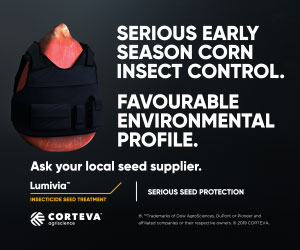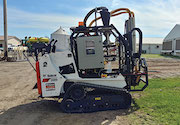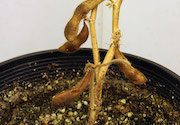| |
| |
 |
 |
| |
 |
|
October 30, 2019 |
|
| |
After a record year for deoxynivalenol (DON) in 2018, Ontario corn growers are seeing different results from this year’s provincial corn ear mould and mycotoxin survey. The 2019 survey found 96 per cent of samples tested low for DON, which is significantly lower than 2018.
» Read more...
Introducing fungi to wheat boosted the uptake of key nutrients and could lead to new, climate smart varieties of crops, according to a new study out of the University of Leeds.
» Read more...
Applications are now open for the Brian Fox Memorial Agriculture Scholarship, which awards $2,500 to an southwestern Ontario student studying or going to study agriculture in college or university. The deadline to apply is Nov. 30, 2019.
» Read more...
|
| |
|
| |

The trusted standard in corn seed treatment that protects against early season insects.
Lumivia™ insecticide seed treatment offers serious protection against key early season insect pests. Early-season insect pests pose a serious threat to your corn crop's yield potential and profitability; Lumivia delivers excellent broad-spectrum protection.
Here’s what you need to know:
- Lumivia offers outstanding protection against key early-season insect pests, including control of wireworm, white grub and cutworm, plus suppression of seedcorn maggot.
- Protecting corn with Lumivia helps develop uniform and healthy stands that maximize yield potential.
- Lumivia simplifies your seed treatment decision by offering immediate protection of seed and seedlings. It's a valuable tool for an Integrated Pest Management (IPM) Strategy, reducing the environmental impact while minimizing administrative record-keeping.
- Field trials show that Lumivia treated corn plants had superior size and vigour as compared to the fungicide only treatment.
Ask your local seed supplier about Lumivia™ and learn more at
lumivia.corteva.ca
1 Results from large scale grower managed field trials across Western Canada in 2015.
2 Source: 192 DuPont Research & Development (replicated) trials and Grower Demo strip trials (2010-2015).
3 Source: Canola yield averaged across 137 Grower Demo Strips, Western Canada (2013-2015).
®, ™ Trademarks of Dow AgroSciences, DuPont or Pioneer and affiliated companies or their respective owners. ©2019 CORTEVA.

|
| |
|
| |
 Can removing humans from the equation improve the accuracy of soil sampling? A company in West Lafayette, Ind. is building robotic soil sampling machines on top of a Bobcat skid steer platform that autonomously works a field, pulling soil samples, and bagging them. But how did it stack up in capacity and accuracy when compared to a human sampler?
» Learn more
Can removing humans from the equation improve the accuracy of soil sampling? A company in West Lafayette, Ind. is building robotic soil sampling machines on top of a Bobcat skid steer platform that autonomously works a field, pulling soil samples, and bagging them. But how did it stack up in capacity and accuracy when compared to a human sampler?
» Learn more |
| |
 Stubble loss – where the lowest pods on soybean plants remain attached to the stubble after harvest – can be a costly and frustrating yield loss problem. Low pod height causes one of the main header losses, so a Manitoba research project is determining whether plant growth regulators might offer an effective way to increase pod height.
» Learn more
Stubble loss – where the lowest pods on soybean plants remain attached to the stubble after harvest – can be a costly and frustrating yield loss problem. Low pod height causes one of the main header losses, so a Manitoba research project is determining whether plant growth regulators might offer an effective way to increase pod height.
» Learn more |
| |
| INPUTS: THE PODCAST BY TOP CROP MANAGER | | | | | | | | | | | | | | | | |
|
| |
 What crops benefit from a fall fertilizer application, and when, where, and how should you approach it? Robert Mullen, director of agronomy sales for Nutrien, joins us on this episode of Inputs, to share some best practices.
» Listen Here
What crops benefit from a fall fertilizer application, and when, where, and how should you approach it? Robert Mullen, director of agronomy sales for Nutrien, joins us on this episode of Inputs, to share some best practices.
» Listen Here |
| |
|
| |
|
|
| |
| |







